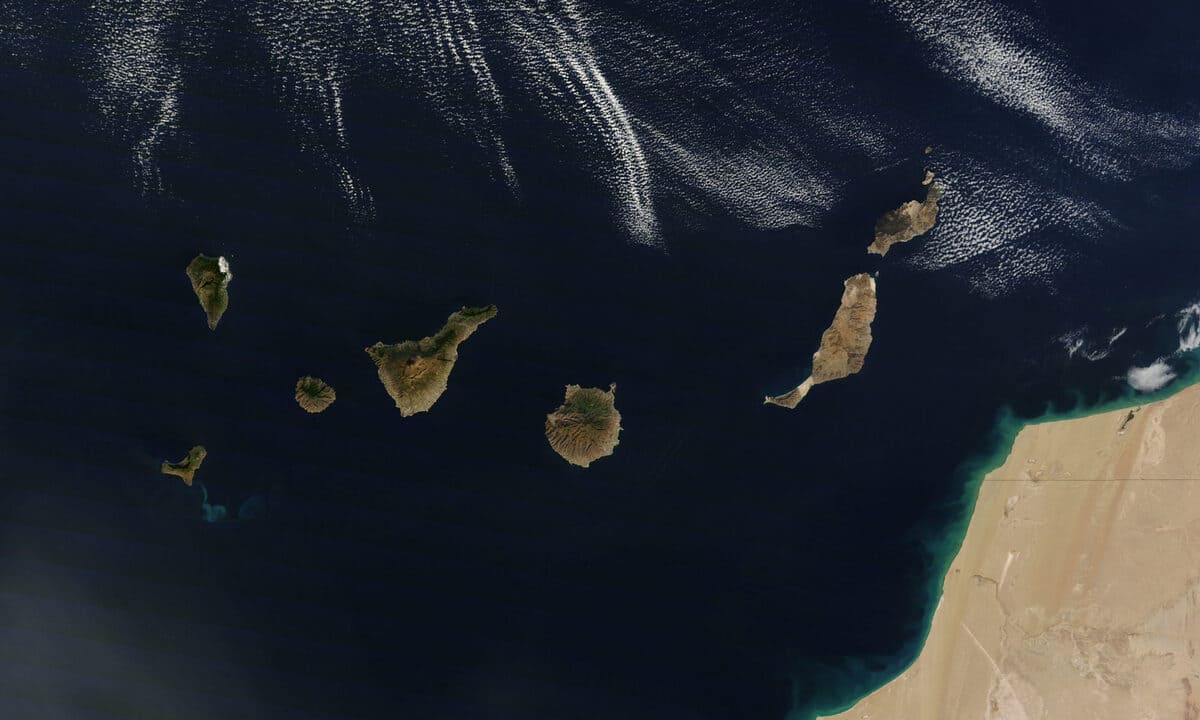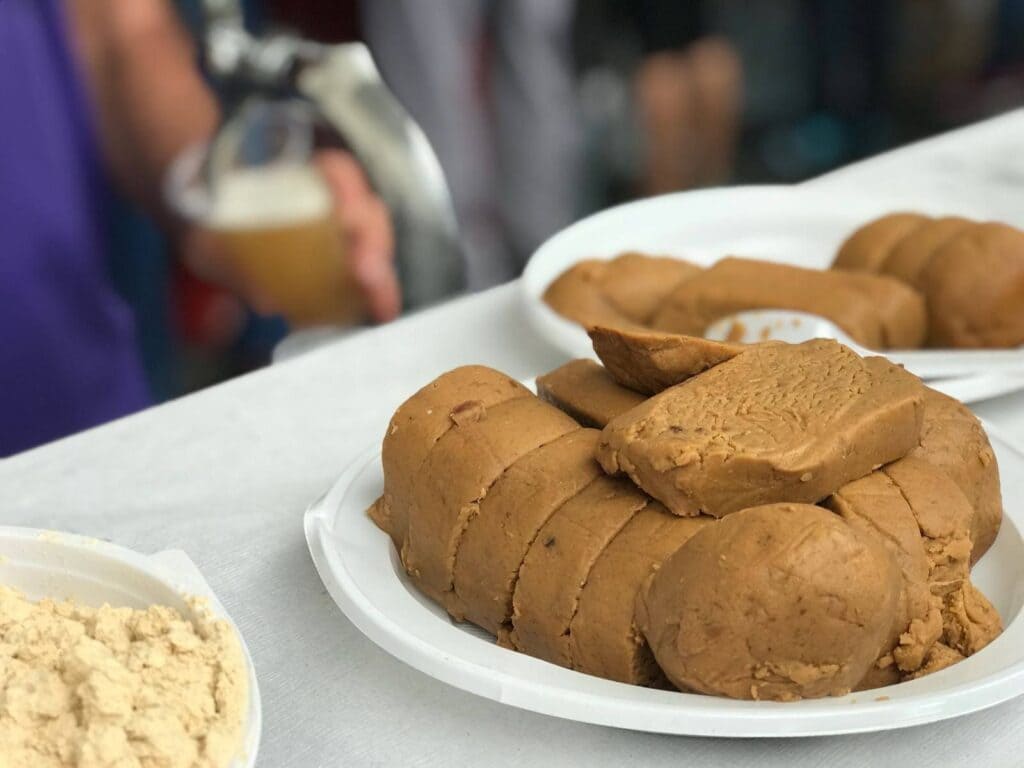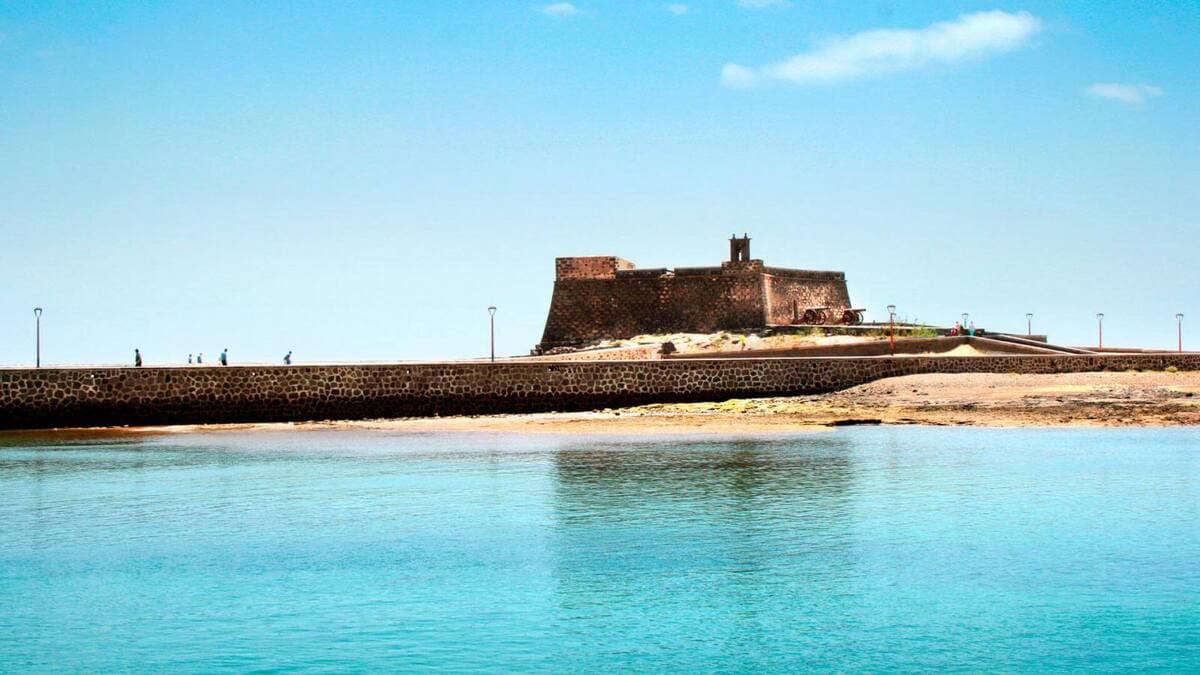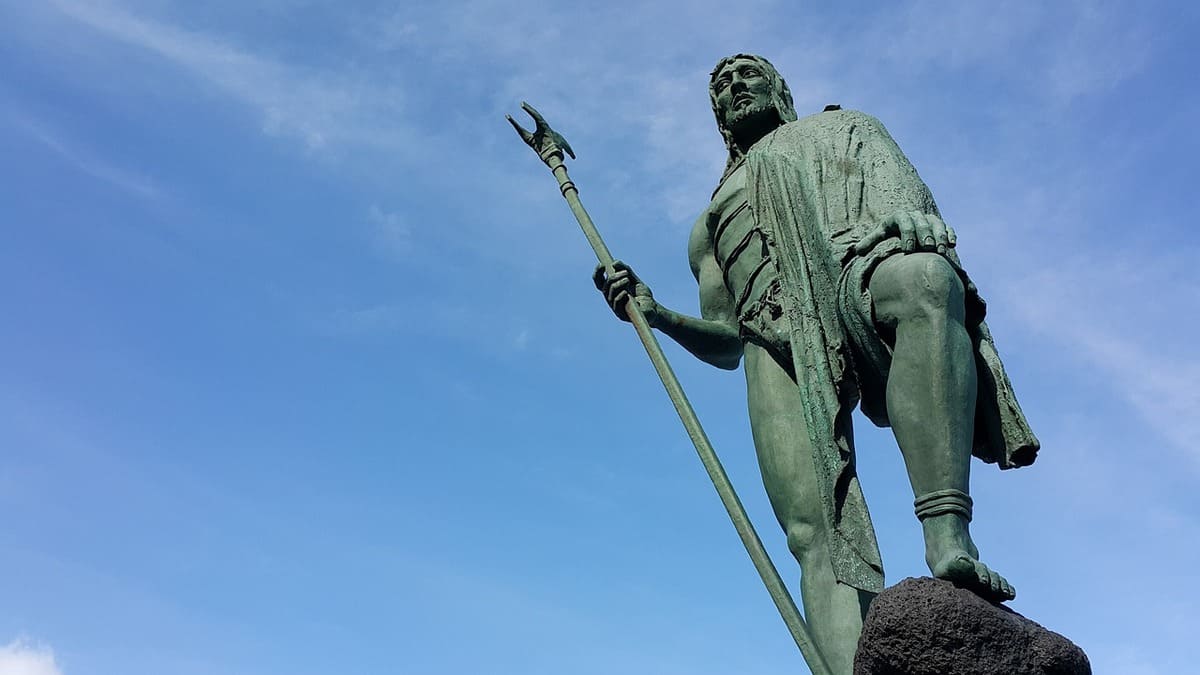The puchero canario is a traditional Canarian stew. This dish, as simple as it is nutritious, varies depending on the island where it is prepared or the home where it is cooked.
History of the puchero canario
It has its origins in the traditional stews of the Iberian Peninsula. Since its origins, the Canary Islands have always been influenced by different cultures, not only because of the coexistence of several cultures on the islands, but also because of the strategic geolocation of the archipelago as a port of passage on routes to America or Africa.
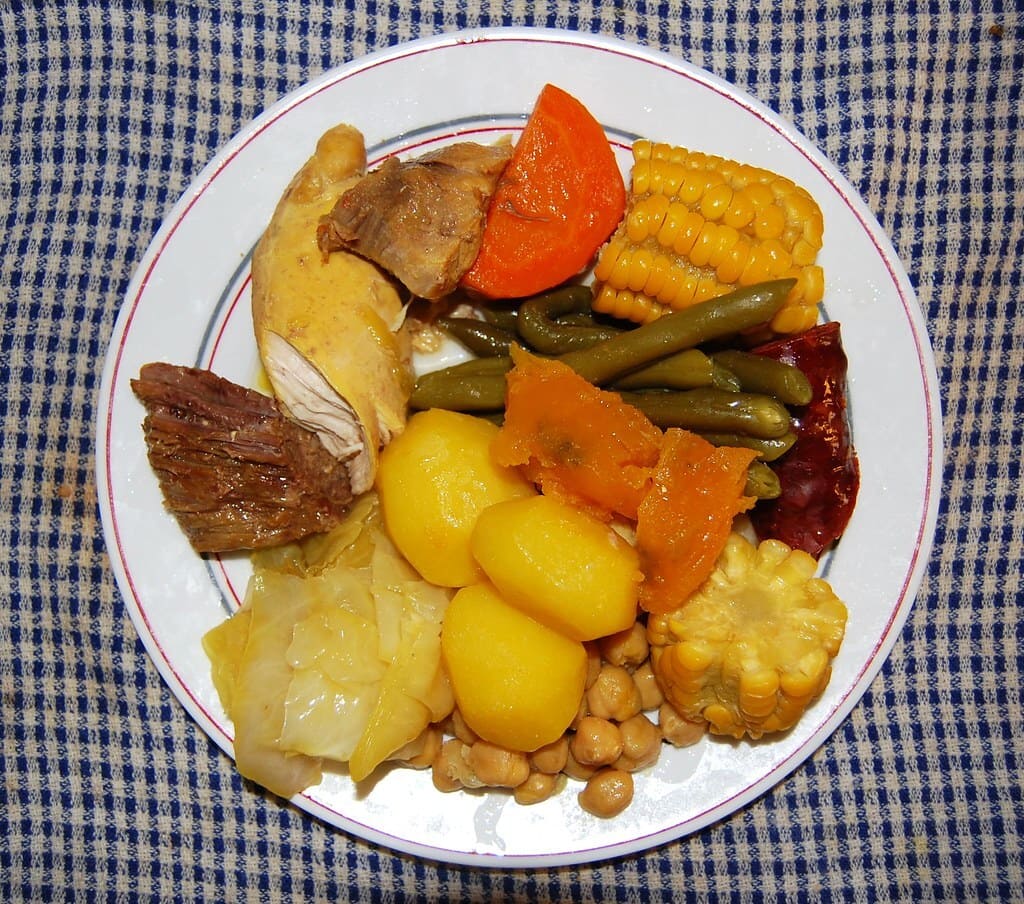
The different influences have marked the Canary Islands, not only culturally, but also in its recipes. This has meant that, over the centuries, different variants or interpretations of typical dishes from other regions such as Venezuela, Cuba, etc. have been introduced into Canarian gastronomy. According to its style, this consistent dish is reminiscent of the typical Portuguese stews or casseroles.
Initially, the Canarian stew was a dish of humble and rural origins, as its preparation was based on the products of the vegetable garden and the family farm. Subsequently, its evolution has led it to become a typical dish at celebrations and festivals, due to its laborious preparation.
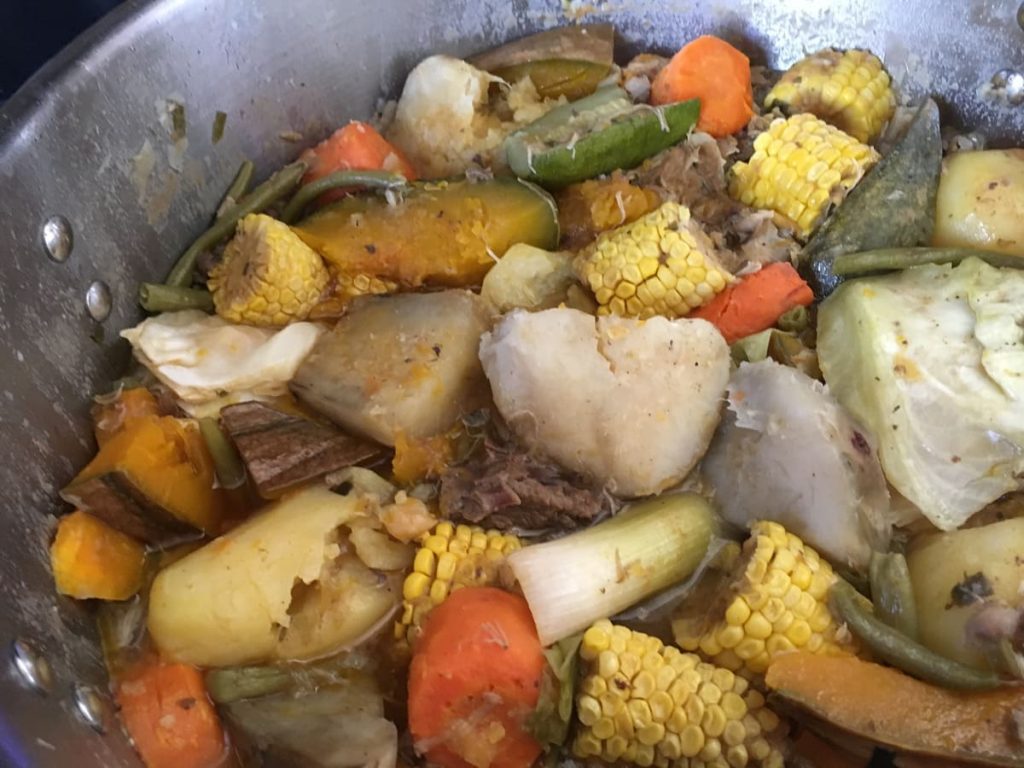
How to make a Canarian stew
Typical ingredients
The puchero canario consists of beef, pork, chicken, chorizo and bacon. It also contains chickpeas and typical vegetables such as sweet potato, potato, pumpkin, bubango (courgette), carrot, cabbage, green beans and millet pineapple (corn). All of these are stewed together and accompanied by a majado.
Generally its broth is served as a soup first or it is used for the preparation of a gofio escaldón ( if you don't know what escaldón is, we leave you here the following link), all accompanied by stewed vegetables and a good red or green mojo, or oil and vinegar.
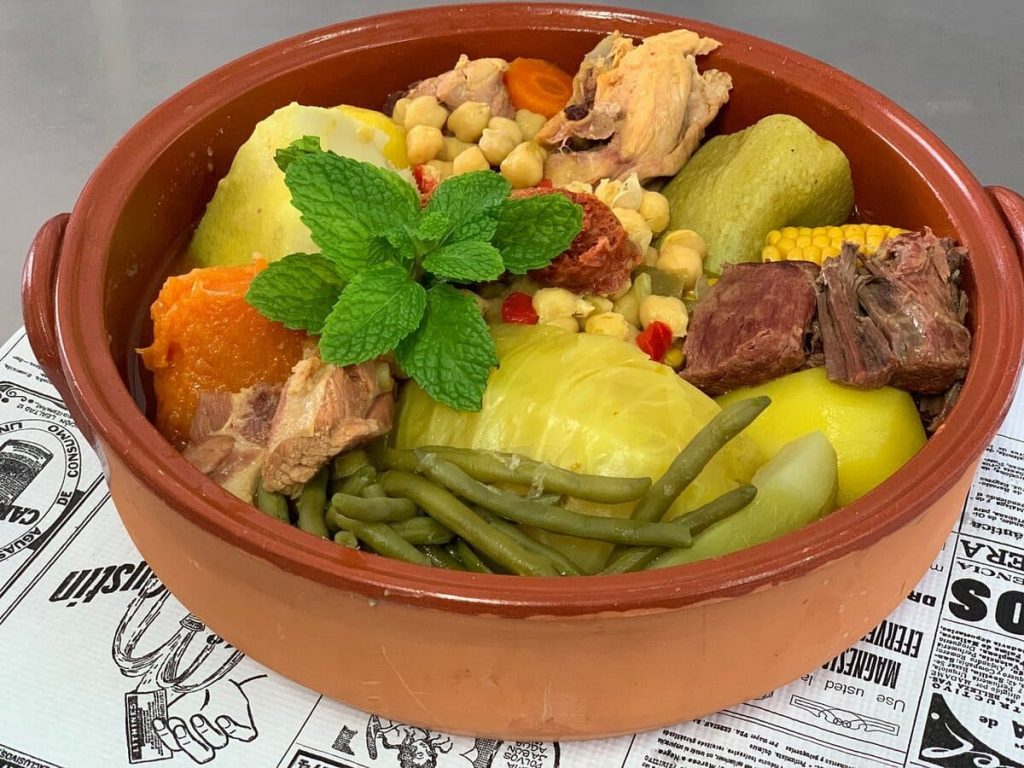
Preparation
Soak the chickpeas the night before, changing the water at least twice, so that they are ready to cook the next day. In a cauldron, add four or five litres of water and put it on the heat with the chickpeas until it comes to the boil. Then add onion, pepper, garlic and season to taste. The millet pineapples are also added to the stew.
Then add the beef and pork and boil for about 45 minutes. Then add the chicken meat, carrots, cabbage and beans. After half an hour, add the sweet potatoes and potatoes, as well as the pumpkin and the bubango, all cut into large chunks, and leave on the heat for another half an hour.
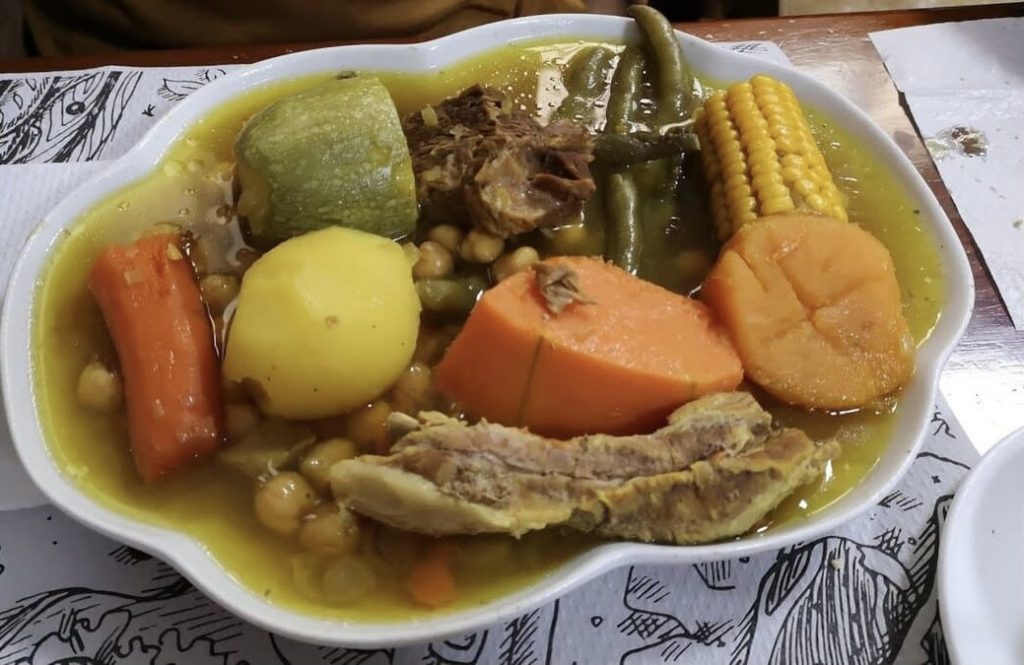
When the stew has rested and with the help of a skimmer, remove the vegetables from the pot and place them on a tray. Use the broth to prepare a "escaldón". Serve immediately and piping hot.
The Canarian stew, being such a copious dish and made with so many ingredients, is usually eaten over two or three days. The leftovers of the stew are called "tumbo", or what is the same, the union in the same dish of the different meats, vegetables, pineapples and chickpeas. Moreover, resting it from one day to the next makes this dish even more delicious.
Paula Vera
Photos: nutricionistasveganos.com, tripadvisor.es, flickr.com, youtube.com
